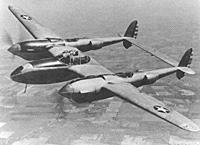 Introduction
Introduction
It is not the business of generals to shoot one another.
- --Duke of Wellington
Refusing an artillery officer permission to fire upon Napoleon himself during the Battle of Waterloo, 1815. Attributed, 1815
Generals have long recognized that a brilliant enemy leader is far more dangerous than a numerically superior enemy army. Chabrias (410-375 BC) observed that, "An army of deer led by a lion is more to be feared than a army of lions led by a deer."
Wellington himself said this of Napoleon: "I used to say of him that his presence on the field made the difference of forty thousand men." Despite Wellington's reluctance to directly inflict harm upon a fellow officer, he (and others) no doubt recognized that battles could often be won more effectively and quickly by eliminating enemy leadership than through bloody combat.
As notions of egalitarianism increased through history, chivalrous compunctions to kill enemy officers on the battlefield, of noble birth or otherwise, further decreased. Even at the Battle of Trafalgar in 1805, Admiral Horatio Nelson, conspicuously arrayed with his medals, was spotted and promptly shot by a French sharpshooter who evidently shared little of Wellington's gentlemanly sensibilities. By the time of the First World War (itself precipitated by the assassination of the heir to the Austrian throne), officers of all ranks, including general officers, were fair game. Today, in sharp contrast to Wellington's words, enemy leaders are actively sought and targeted by their counterparts.
However, as armies have become increasingly large and with command headquarters tending to shift further and further away from the battlefield, generals have become increasingly difficult to find and eliminate. In unconventional or asymmetrical warfare, enemy leaders have proved nearly impossible to find, let alone eliminate.
As a result, there has been growing dependence on sophisticated technology, particularly aircraft or missiles, to find and to dispatch enemy commanders - a practice known euphemistically as a "decapitation strike," hinting at the strategic applications of airpower. Decapitation strikes were attempted against Libyan leader Muammar Gadhafi in 1986, and against former Iraqi leader Saddam Hussein during the Persian Gulf War in 1991
(Editor's note: The latest Iraq War had even more stark examples of this. Hint for travelers: Stay away from restaurants frequented by dictators).
We have also seen recent examples of aircraft-delivered precision-guided munitions killing enemy leaders far away from battlefields (witness the assassinations of Hamas leaders or the hunt for Taliban and Al-Qaeda leaders in Afghanistan).
With these examples seemingly commonplace today, it's easy to forget such missions were also carried out long ago, when the theories of the applications of airpower were still in development and the technology used was primitive by today's standards.
Actually, three missions pioneered today's practices; they occurred 60 years ago, during World War II. Nowadays, only one of the three missions is well recognized; the others have slipped into historical obscurity. Of the three, two succeeded, and of the successes, only one proved to have significant impact on the course of history. Nevertheless, all three share one common characteristic: their success was against the odds.
The Pioneers of Aerial Assassination Three WWII Missions
- Introduction
The Punctual Admiral: April 18, 1943
Dutch KLM 777-A's Last Flight: June 1, 1943
Target Von Rundstedt: October 16, 1943
Back to Table of Contents -- Against the Odds vol. 2 no. 3
Back to Against the Odds List of Issues
Back to MagWeb Magazine List
© Copyright 2004 by LPS.
This article appears in MagWeb.com (Magazine Web) on the Internet World Wide Web.
Other articles from military history and related magazines are available at http://www.magweb.com
* Buy this back issue or subscribe to Against the Odds direct from LPS.
